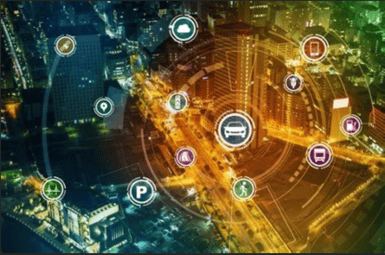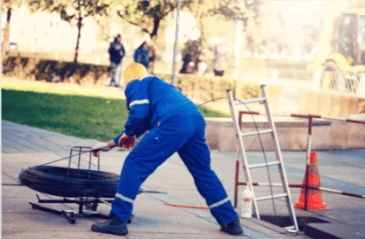Solving the customer problems that we can: Takeaways from Fiber Connect 2019
As a product manager, I love solving my customer’s problems. So it’s always tempting to try and keep developing our product at Biarri Networks to...
-2.png)
In April 2023, The FTTH Council Global Alliance (FCGA) published the results from its global Sustainability Survey. The survey explored Environmental, Social, and Governance (ESG) and Corporate Social Responsibility (CSR) strategies throughout the telecom industry with network operators, service providers, and vendors across five geographical regions. The report noted that, according to a Boston Consulting Group report, the Information and Communications Technology (ICT) sector is responsible for 3% to 4% of all global emissions, staggeringly this is twice the level of the aviation industry and is reported this could rise to 14% by 2040! Allied to this, the 5G ecosystem is expected to drive a 160% increase in power demand by 2030 (Fast Company). In contrast to other sectors, telecoms has not faced as much scrutiny as other high carbon intensity industries…but with climate control issues, customers who have become accustomed to using sustainable products and FTTH deployments very much in public view, ESG/CSR strategies are coming under more intense scrutiny by potential subscribers, by investors, by shareholders.
The good news for those of us working in the sector is that FTTH networks have proven to be the most sustainable form of network infrastructure over the course of its deployed lifecycle. Studies(1) have compared the sustainability aspect (energy consumption and CO2 emissions) of traditional copper or coaxial cable-based technologies with full fibre networks at different speeds and capacity rates. It was found that FTTH technologies are more sustainable than FTTC networks in every scenario, for almost every bandwidth rate and that they are more favourable in terms of power consumption.
The studies also revealed that FTTH networks are far more reliable than copper-based alternatives as the absence of active equipment in the outside plant of FTTH networks eliminates the possibility of service disruptions due to power outages or active equipment failure. Less service disruption and more reliability mean fewer field support staff and fewer truck roles to network locations to carry out maintenance, resulting in further reductions in emissions.
“The telecommunications sector has a significant role to play in reducing carbon emissions and achieving sustainability goals. Fiber optic technology is one of the most sustainable broadband technologies available today. Not only does it consume less energy, but it also has a longer lifespan than other technologies, which reduces the amount of waste generated” Kholoud Aldorgham, Director General for the Fiber Connect Council MENA.
Four years ago, the European Commission shared their ambition of making Europe the first climate-neutral continent by 2050, boosting the economy, improving people's health and quality of life, caring for nature, and leaving no one behind.
And as the FTTH Council Europe’s Sustainability Committee outlined digitalisation is at the core of this ambitious effort with fibre being intrinsic to the digital and sustainability agendas. As the most sustainable telecommunication infrastructure technology, full fibre must be a prerequisite to achieving the European Green Deal and making the European Union’s economy more sustainable.
 (euinasean.eu)
(euinasean.eu)
The FTTH Council Europe has proactively taken a lead role creating its sustainability Working Group of with two key objectives:
There is no dispute that high speed, reliable broadband connectivity is an essential utility for modern life, supporting 5/6G networks as well as smart city applications, and renewal energy sources and it is clear that full fibre consumes the lowest energy whilst emitting the least greenhouse gas (GHG) emissions making them the easiest way to achieve the objective of carbon neutrality as set out in the European Green Deal.
 (Sunderlandoursmartcity)
(Sunderlandoursmartcity)
Telefónica, who has led in the deployment of FTTH in Spain, has reportedly already realised significant savings on its fibre networks, stating a 94% reduced environmental impact in terms of energy and other material resources, which is 18x less than copper for equivalent data consumption.
In a report shared by THE SCTE.EU, Iskratel compared access technologies in Germany where copper based VDSL and HFC are still the dominant broadband delivery mechanisms. The report presents some staggering numbers where they estimated that the access equipment for 25.5 million HFC and VDSL users generated around 95,000 tonnes of CO2 in 2020 alone. If these 25.5 million users had been using GPON instead, they would have only generated around 5,000 tonnes…the difference of 90,000 tonnes of CO2 is the equivalent of putting an additional 37,000 petrol-fuelled cars on German streets or removing 3,600 whales from the world’s oceans!
Whilst accepting these figures were calculated using some rough estimates, Iskratel do highlight the sheer magnitude of the environmental damage that will continue to be done until Germany, the UK and the rest of Europe reach a state of full fibre.
The report also highlights that the choice of fibre network has a bearing on environmental impact and AltNets will need to balance future proofing their networks against the environmental trade off. For example, choosing a GE P2P architecture instead of GPON generates an additional 7,500 tonnes of CO2 emissions every year per a million users. This amounts to 3,000 more cars or wiping out an area equivalent to 4x Berlin’s Tiergarten Park (840hectares/2040acres). Choosing 10GE P2P instead of XGS-PON generates an additional 32,000 tonnes of CO2 emissions every year per a million users, equating to an unbelievable 13,000 more cars or wiping out and area the size of 15 Tiergarten Parks!!
With several research studies completed across the globe, the unanimous agreement is that FTTH is the delivery infrastructure of choice to meet business and consumers’ ever-increasing demands for faster bandwidth whilst also being the most environmentally conscious to deploy and maintain. Choosing a particular fibre architecture will have a bearing on an AltNets CO2 emissions, but whichever is selected, the operator and its customers can be reassured that the emissions generated each year will be significantly lower than any other broadband technology. With more ambitious environmental goals being incorporated into organisational ESG and CSR annual objectives, FTTH paves the way for business strategies that are well integrated with environmental and societal considerations.
Nelson Saito, Fiber Broadband Association LATAM Chapter President said “Building a sustainable future starts with deploying FTTH today, ensuring that every connection we make is not only fast and reliable, but also environmentally responsible”.
 (Treehugger.com)
(Treehugger.com)
Once the choice of architecture is made smart, compliant designs that are optimised from an equipment, material, geography and geology perspective are key to ensure the highest levels of environmentally sound FTTH network is deployment.
At Biarri Networks, we’re pioneers in algorithmic design, developing software and processes to produce faster and more accurate fibre network designs than traditional planning methods. Our design services supported by our proprietary planning software create designs adhering to all our customers hard and fast architecture and planning rules as well as their ‘softer’ design guidelines, combining them to deliver designs that are always compliant and always optimised.
The results support an AltNet’s desire to build a cost-effective network that also meet sustainability objectives. Ultimately, a well-designed and deployed FTTH network should:
Together with the latest product innovations such as Dure-line’s FuturePath ECO microduct range which are manufactured from recycled materials, come in a smaller form-factor using less plastic overall, allow twice as much product to be transported per truck (resulting in 50% less: transport costs, CO2 emissions and storage space); plus it requires 30% less trench space (a huge benefit with the congested ducts we see across the UK PIA infrastructure and similarly across Europe) and is easier/quicker to handle for the build teams.
 (Dura-line)
(Dura-line)
Good designs combined with the latest sustainable products all positively contribute to an AltNets Scope-3 GHG emission KPIs and with Scope-3 emissions accounting for ≤90% of a telco’s emissions, it’s clear that a good, sustainable design is a solid foundation for an environmentally conscious operator.
With the UK and Europe progressing towards its ambitious connectivity targets, it is clear from recent research that FTTH deployment holds the key for meeting the twin goals of digital inclusion and sustainability. Those deploying FTTH networks can play a key role in enabling sustainable activities across many sectors for years to come and by leveraging the unique long-term advantages of FTTH, operators can monetise their ‘green credentials’ to generate revenue and secure future investment for continued network expansion whilst reducing their own energy consumption, emissions.
Consumers are becoming ever more environmental aware with their purchasing decisions, and for the AltNets this brings opportunity to further differentiate against the recognised CSPs. Building a brand that is seen to provide ultra-fast broadband, via a sustainably designed, constructed and maintained FTTH network could just help those AltNets really start to acquire subscribers Vs those Service Providers competing on price alone.
(1) Study conducted by Prof. Dr. -Ing. Kristof Obermann from the University of Applied Sciences (Technische Hochschule) Mittelhessen from BREKO in May 2020 https://brekoverband.de/gutachten-nachhaltigkeitsvergleich-von-ftth-und-fttc

As a product manager, I love solving my customer’s problems. So it’s always tempting to try and keep developing our product at Biarri Networks to...

Bad data has the gravitational pull of Jupiter. It causes problems as massive as a planet for telecommunication networks thanks to errors, missing...

Twenty-first-century life demands high-speed Internet. Period. The Internet drives the economy, connects us near and far, helps us stay healthy,...